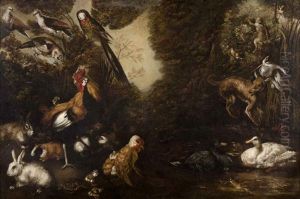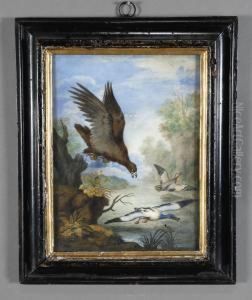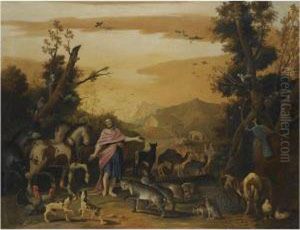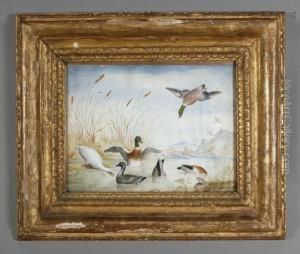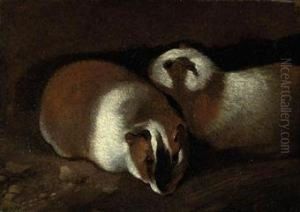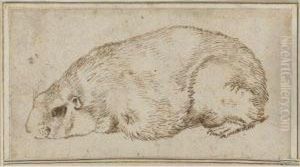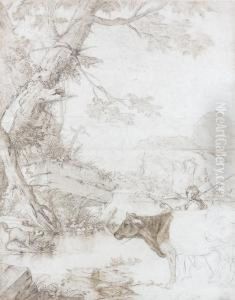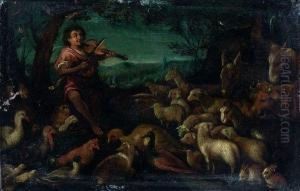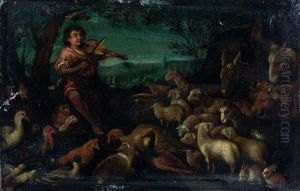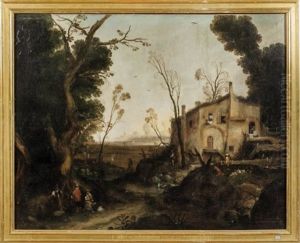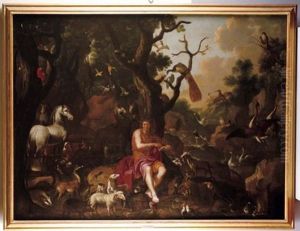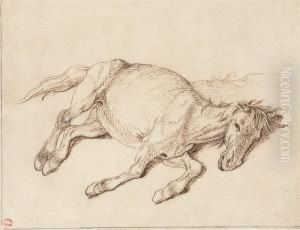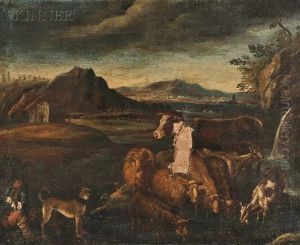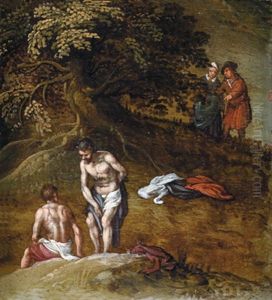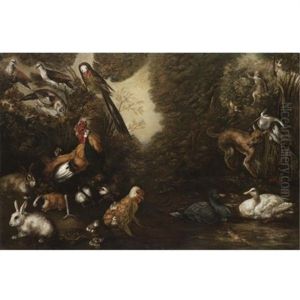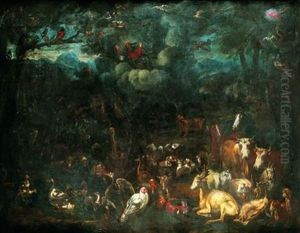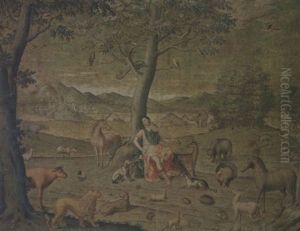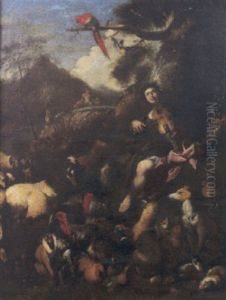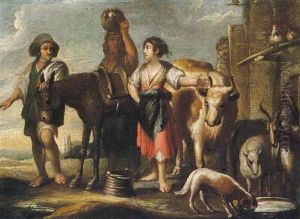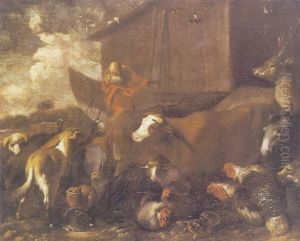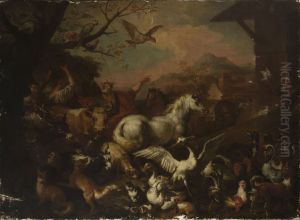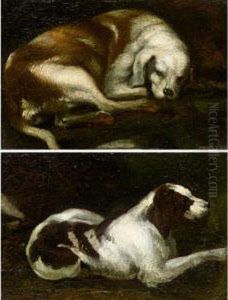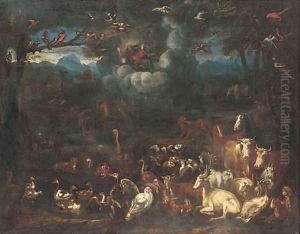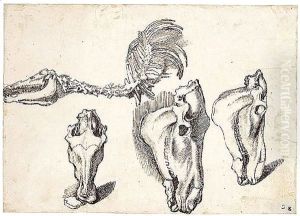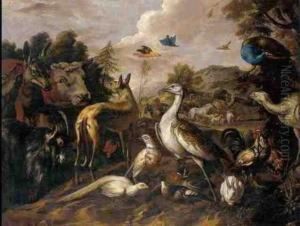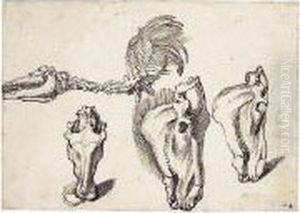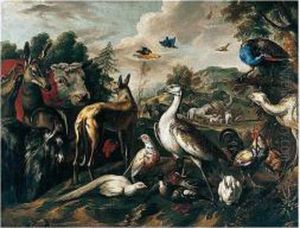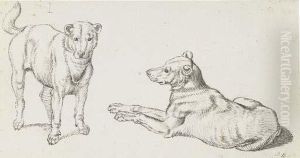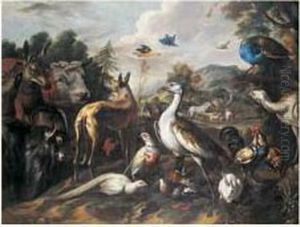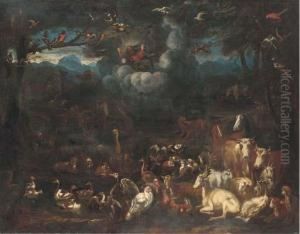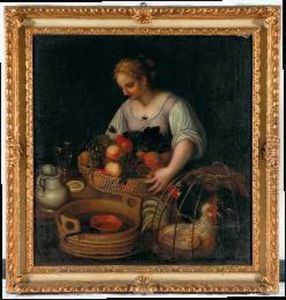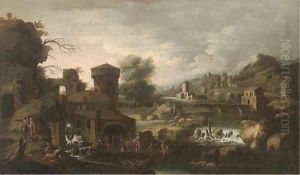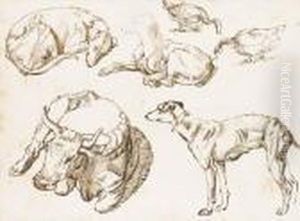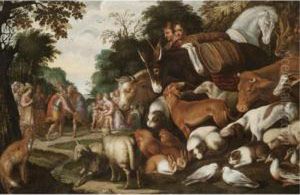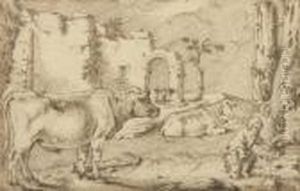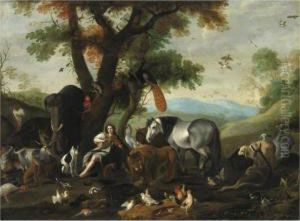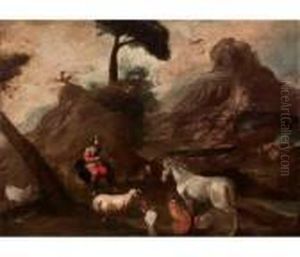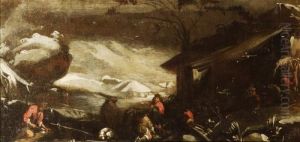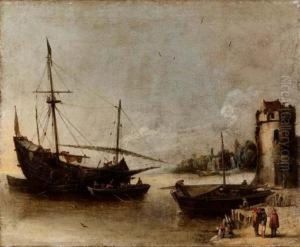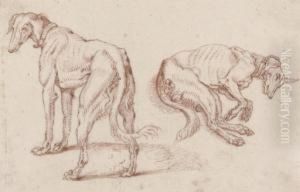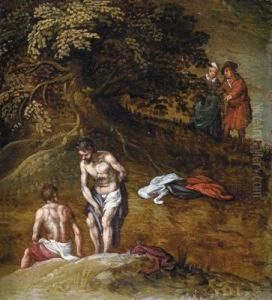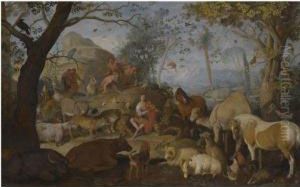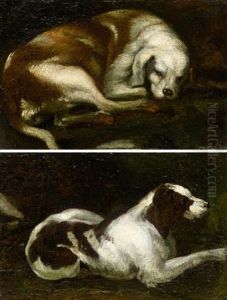Sinibaldo Scorza Paintings
Sinibaldo Scorza was an Italian painter and etcher who was born on November 12, 1589, in Voltaggio, within the Republic of Genoa. He was known for his detailed and delicate portrayal of animals, landscapes, and mythological themes. Scorza was a student of Giovanni Battista Paggi and later, possibly, of Caravaggio, though this latter apprenticeship remains debated among scholars.
Scorza's style was influenced by the naturalism and chiaroscuro technique characteristic of the early Baroque period. He was particularly adept at capturing the textures and movements of animals, earning him the nickname 'the Genoese Bassano.' This was in reference to Jacopo Bassano, an earlier Italian painter renowned for his pastoral scenes and lively depictions of animals.
He traveled to Rome, where he was exposed to the works of the great masters of the Renaissance and the burgeoning Baroque movement. However, Scorza's career was mostly centered in Genoa, where he became a leading figure in the local art scene. He was also active in the court of the Savoy in Turin, receiving commissions from the duke, including works for the Palazzo del Valentino and the Castello del Buonconsiglio.
Scorza was also a member of the intellectual circle around the Genoese scholar Giovanni Battista Marino, which influenced his approach to mythological and allegorical subjects. His etchings and drawings were highly prized for their inventiveness and technical skill.
Unfortunately, Scorza's life was cut short when he died on April 10, 1631, in Genoa. Despite his relatively brief career, his work left an indelible mark on the transition from Mannerist to Baroque styles in Northern Italy. His artworks are preserved in various museums and collections, showcasing his contribution to the Italian Baroque and his mastery in rendering the natural world.
